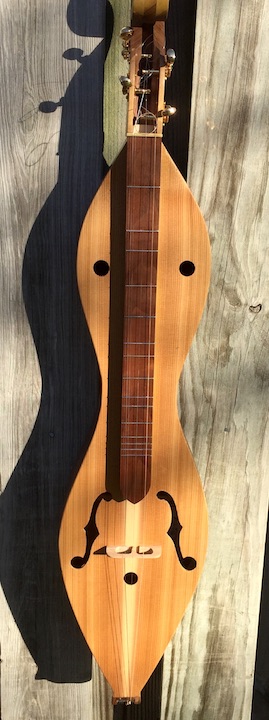Dominate Archtop Design
••••••••••••••••••••••••••••••••••••••••••••••••••••••••••••••••••••••••••••••••••••••••••••••••••••••••••••••••
Archops [guitars] are good designs. Some contemporary luthiers do build with repair in mind. The playing public is less concerned about this aspect the guitar. The market will continue to lower the cost of instruments and make them disposable. Discriminating players understand the dynamics of construction and tone.
••••••••••••••••••••••••••••••••••••••••••••••••••••••••••••••••••••••••••••••••••••••••••••••••••••••••••••••••
Presented is a response to another blog site on the topic of “Dominate Archtop Designs”. In that session the author’s point of view is about popular designs concerning archtop guitars. The point of view is from that of sales history when Gibson dominated with particular designs. There the author purposes archtop designs like those of the L-5 and the later ES-175 are part of a term known as Dominate Design.
This presentation comments on actual design of the archtop to establish a point of view regarding design considerations such as physical properties, materials, and construction methods of guitars, mandolins and other stringed instruments. Personal preferences held and discussed could be adopted for the musical instrument genre. Think of the comments in terms of, use of materials and the ability to facilitate repairs and why buyers might think of these issues when selecting contemporary instruments.
The L-5 (or L-7, 10s. 12. etc), in fact, the archtop concept of design is a good one. It lasts and lasts due to its physical properties. Archtop instruments of 80 years plus are intact while flattop design has issues. When you look at its cousin the cello and other stringed instruments of arched construction then the instruments have creation dates much earlier.
Tensions and stresses are addressed in the design of archtop instruments which are reflected by their longevity. Contrast the flattop designs which on average have a life span of 50 years or so. This is a general statement I’ve heard in the community. There are the flattops of the 1500s, 1600s and onward (Guitarra and Vihuela) which are mostly museum pieces that are still present. Tensions were of lesser values due to use of gut strings which may be why examples still survive.
One must consider the attitude of construction differs from today. Today most if not all guitars are made for sale as a product. The product has a short lifespan so more can be sold. The idea of repair is not as highly regarded as in the past. While hide glue and other glues which allows tops, backs, and necks to be removed with minimal disruption to appearance and function were dominate in 1500- 1900’s, polyurethane glues and other methods to secure joints do not lend themselves to repairs easily in today’s high volume manufacturing world.
The same can be said for the contemporary finishes. Shellac (French polish) and nitrocellulose finishes can be reworked to make “just made” vibe. Urethane finishes are one-shot applications whose repair procedure is complete removal and refinish. Costs involved for such procedures usually make it cost effective to purchase another new instrument.
Luthiers of earlier periods, had less string tension on their instruments than instruments of today which may account for some destructive tendencies of contemporary flat top designs.
So…
Archops are good designs. Some contemporary luthiers do build with repair in mind. The playing public is less concerned about this aspect the guitar. The market will continue to lower the cost of instruments and make them disposable. Discriminating players understand the dynamics of construction and tone. Pockets of the instrument buying market do understand this. They are likely to be found in the orchestral instruments, classical and flamenco guitar market segments. The jazz guitar / archtop community could benefit from this attitude.
Rev21608
Monday, December 3, 2007
Subscribe to:
Posts (Atom)




